Measurement of Integrated Microbolometer Detectors for Passive Imaging
Lens-bolometer detectors from VTT Technical Research Centre of Finland are characterized at 321-850 GHz. The radiation patterns are measured with horizontal and vertical polarizations. Performance differences between individual detectors in a single module are studied. Also, success to align the lens on the bolometer is evaluated.
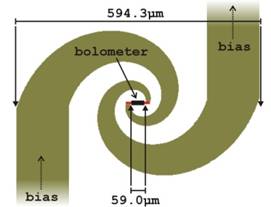 |
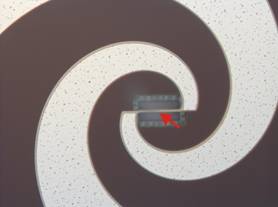 |
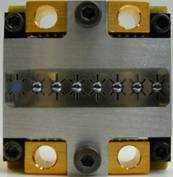 |
| a) | b) | c) |
Figure 1. a) Dimensions of microbolometer, b) a micrograph of the same, and c) a module of eight bolometers with silicon lens.
The abovementioned imager utilizes superconducting antenna-coupled microbolometers as sensitive detectors for submm-radiation. A 2-mm hyper-hemispherical silicon substrate lens is used to focus incident sub-mm radiation on the microbolometer. An air-suspended niobium nitride bolometer with an equiangular spiral antenna is located on the backside of the substrate lens. Such a device is a sensitive, wide-band bolometric detector when biased on its superconducting transition at s few Kelvin. Packed to an array of bolometers, the detectors are used in a focal plane of the imager.
Measurement setup
A room-temperature measurement range is used to characterize the radiation properties of above described detectors. A faithful measurement campaign with 4-K cryocooler is ruled out due to need for easy rotation of the detectors in the range. This leads to dramatic decrease in the sensitivity of the bolometer. The irradiance on the detectors needs to be correspondingly greatly increased compared to the superconducting operation of the bolometers. The reduced sensitivity must be compensated by use of powerful backward-wave oscillators (BWO) and by reducing the propagation path length in the range. Also, the read-out bolometer signal is easily buried in noise without dedicated data-acquisition incorporating low-noise amplification and lock-in detection.
| a) | 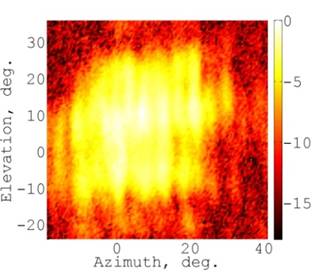 |
b) | 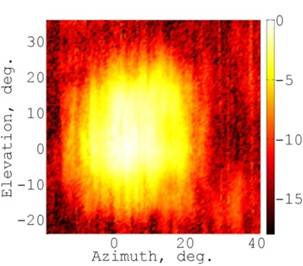 |
| c) | 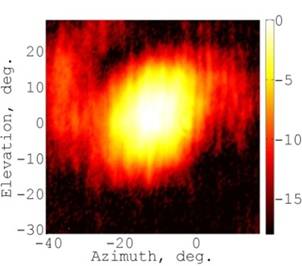 |
d) | 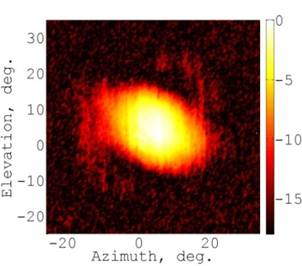 |
| e) | 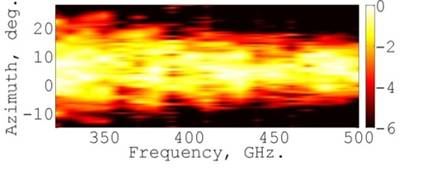 |
f) | 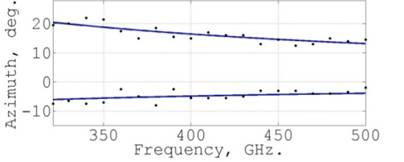 |
Figure 2. Bolometer radiation pattern measurements at 321–850 GHz. (a-d) Radiation patterns at 321 GHz, 400 GHz, 654 GHz, and 780 GHz, respectively. (e) Azimuth cut of the radiation pattern at 321–500 GHz. (f) least squares fit to the radiation pattern cuts gives relation FWHM = 8.5° per THz. The scales in the patterns are in decibels.
Radiation patterns for antenna-coupled microbolometers are measured at selected frequencies at 321–850 GHz. The beam profile becomes more symmetrical as the frequency increases. At the same, beamwidth narrows from 25.3 degrees to 12.2 degrees. Also, azimuth cuts of the radiation patterns are measured at 321–500 GHz at closely spaced frequencies. These measurements fitted with least squares method show 8.5-degrees-per-THz relation for the FWHM beamwidth of such a detector.
Contact person: Juha Ala-Laurinaho


